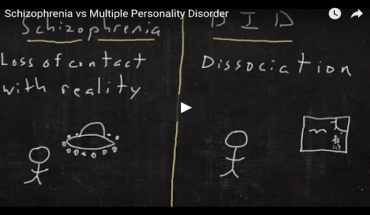‘We are They: Where id was ego shall be’ Jane McAdam Freud:
Rebecca Wallersteiner takes a look at ‘We are They: Where id was ego shall be’ at Gazelli Art House, a though-provoking exhibition of exciting, new work by Jane McAdam Freud, great-granddaughter of Sigmund Freud, which explores our unconscious beliefs and shadow selves
In her fourth solo exhibition with Gazelli Art House Jane McAdam Freud’s beguiling and thought-provoking new series of works We Are They: Where id was ego shall be explores the notion of what is conscious/unconscious, ego/id, masculine/feminine, nature/culture, as well as the origins of painting and the psychoanalytic concepts of the shadow.
As the great granddaughter of Sigmund Freud the artist belongs to the Freudian legacy – and psychoanalytic concepts and symbolism have infiltrated her creative life. ‘Where id was, ego shall be’ is a quote by her great grandfather, Sigmund Freud who believed that if we attained dominion over our un-thought (unconscious) thoughts, we would access a more evolved, integrated and truer sense of self. McAdam Freud reflects, “As women our greatest shadows have always been men – the hero, the father, the historian, our keepers. If we learnt to value femininity in both men and women we might be able to confront gender biased rituals.”
Mila Askarova, the Director of Gazelli Fine Art says, “We are proud to once again exhibit the work of Jane McAdam Freud, who continues to challenge our thoughts on psychodrama, creativity and the role of women in modern life.” Jane McAdam Freud’s hope is to (literally) draw attention to our unconscious beliefs and shadow selves in order to bring to light possibilities and freedoms, especially for the future of women. Society is built on our unconscious prejudices, and McAdam Freud’s shadow drawings mimic the outlines of a crime scene, accusing and framing her subjects as implicated in ongoing structural inequality – the series of drawings are in fact titled ‘Crime Scenes’.

‘Charged Drawing’ Crime series 2019 by Jane McAdam Freud
The exhibition presents recent drawings that look part outline, part Dali ink drawing, part Rorschach test.
Pliny the elder’s ‘Natural History’ (77-79 AD) tells the story of the origins of painting. Though the Egyptians and the Greeks dispute the original instance both generally agree that painting began with the tracing of a line around cast shadows. Pliny tells the story of the daughter of Butades of Corinth, who while deeply in love with a young man apart to depart on a long journey, traced the profile of his face, as thrown upon the wall by the light of the lamp. McAdam Freud reproduces this process drawing a line around her muses, capturing an essence of their being in an abstract portrait. McAdam Freud explains, “I use my muses
not to draw from but to draw around. The physical participation of the model is such an intimate encounter it generates powerful ‘energy’ which seems to inhabit these works.” The primitive linear gestures of the outlines evoke tribal and totemic imagery, referencing the aesthetic realm of Freud’s clinical room (with his collection of artefacts) while also hinting at symbolic archetypes that produce cultural habits.
An internationally acclaimed sculptor and multidisciplinary artist – drawings, prints, digital media – with a career extending over thirty years. McAdam Freud is currently an associate lecturer at Central St Martins and regularly teaches at a number of other art institutions in London. Her research into Freud’s psychoanalysis has resulted in a number of collaborations with psychoanalytic societies around the world. Her work frequently draws inspiration from the rich source of her own family background, referencing both the remarkable collection of her great-grandfather Sigmund Freud’s ancient sculpture and the cultural legacy of Freudian psychoanalysis which has had a profound and lasting effect on the contemporary psyche.
www.gazelliarthouse.com
- Dream Worlds a new exhibition in Cambridge - 14th December 2024
- “All Our Stories” a major new exhibition - 26th September 2024
- Dance yourself well - 23rd June 2024






